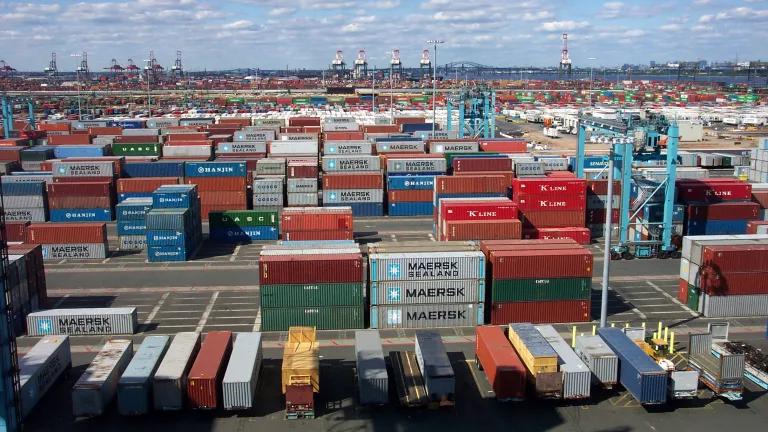RAISE Grants Raise the Bar
It will be a great day when programs like RAISE are the norm and not the exception.

Robert Ruggiero
In June, U.S. Transportation Secretary Pete Buttigieg announced $1.8 billion in awards from the Rebuilding American Infrastructure with Sustainability and Equity (RAISE) discretionary grant program for 148 projects across the country. The announcement brings the total amount of RAISE grants to more than $7.2 billion for over 550 projects across the country since the passage of the Bipartisan Infrastructure Law. The vast majority of grantees have been projects focused on improving roadway safety for people walking, biking, and using mobility devices, enhancing transit service, and building trail connections for commuters and communities.
This year was no different. Below are some projects chosen from the full list of projects to illustrate the diversity and geographic scope of the grantees.

US DOT
$20,704,712 for the Joe Louis Meets the Iron Belle: Connecting Communities in Detroit Project in Detroit, Michigan – The project will fund the construction of two shared-use paths in the Joe Louis Greenway and Iron Belle Trail systems. The improvements are focused on safety, environmental sustainability, quality of life, mobility, economic competitiveness, and partnership.

US DOT
$8,000,000 for the Culebra Road Improvement Project in San Antonio, TX - The project will fund the planning, design, and environmental work for safety and multimodal improvements along an approximately 5-mile segment of Culebra Road from I-410 (Loop 410) to General McMullen Drive, which is one of the most dangerous roadways for pedestrians in San Antonio. The project will include safety and multimodal complete streets improvements including ADA sidewalks, crossings, dedicated bicycle facilities, transit stops, street trees, traffic calming, and green infrastructure.

US DOT
$23,529,000 for the Electrify Downeast Acadia Project in Washington, Penobscot, and Hancock Counties, Maine – The project will replace Downeast Transportation Inc.'s bus fleet with 24 electric buses and chargers, focusing on safety, environmental sustainability, economic competitiveness, and innovation. The project aligns with the U.S. National Blueprint for Transportation Decarbonization, reducing greenhouse gas emissions and implementing charging infrastructure.

$12,044,800 for the Holloway Street: Safe Access to Durham’s Busiest Transit Route Project in Durham, North Carolina – The project will improve 33 intersections, including ADA curb ramps and crosswalks, tighten curb radii, upgrade bus stop amenities, and close sidewalk gaps. It focuses on safety, environmental sustainability, quality of life, mobility and community connectivity, economic competitiveness, partnership, collaboration, and innovation. The project aims to reduce fatalities and injuries, reduce conflicts, and improve connectivity for non-motorized travelers. It also aims to reduce community reliance on vehicular traffic, support electrification, and promote public health.

US DOT
$3,906,652 for the Browning Streets Community Connectivity Planning Project on the Blackfeet Reservation, Montana – The project will fund planning and design for reconstructing streets in Browning, taking a Complete Streets approach to addressing roadway safety and pedestrian issues. Planning efforts will seek to improve access to daily destinations while decreasing dependency on motor vehicles.
One Step Forward, but Two Steps Back?
RAISE, combined with other discretionary grant programs such as the Reconnecting Communities Pilot and Safe Streets and Roads for All, mark an impressive and historic commitment to equitable and sustainable transportation at US DOT. And the demand is strong, for instance there was $13 billion in requests for RAISE in this latest round. Unfortunately, there has not been the same commitment from state Departments of Transportation who are responsible for eighty percent of transportation spending through formula funds that each state gets based on their population and amount of driving. These state departments are still putting too much emphasis on highway expansion, which encourages more driving, worsening air pollution, dividing communities, and making the transportation system less safe for vulnerable users.
The stakes are high. Transportation is the largest source of greenhouse gas emissions in the United States, and analyses show that transportation spending from the Bipartisan Infrastructure Law (BIL) could either help or hinder the shift to a climate-friendly system. The BIL roughly doubled the amount of federal transportation spending through the Surface Transportation Reauthorization Act of 2021, which expires in 2026. That makes this the perfect time to finally begin a conversation focused less on the amount of money being spent, and more on ensuring that the nation’s transportation investments improve safety for people of all abilities, expand access for everyone, and ensure that the transportation sector reduces greenhouse gas emissions, rather than continuing to raise them.


